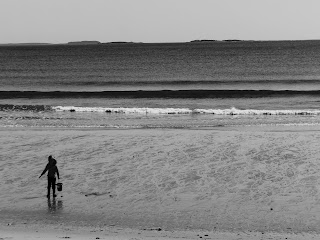 |
| From www.acleanpeace.com -- in an article that gets its facts badly wrong about Pepsi's new product |
Since plastic is petroleum-based, switching to plants will free us of a major source of petroleum dependency, right?
Wrong.
There's a lot of confusion & spin about this, and it's time to clear that up. #1, #2, #4, and #5 plastic comes from ethane. Ethane is a waste by-product found in natural gas fields and oil wells. It is a volatile, hot-burning natural gas. It
 |
| Gas flare in Thailand (picture from Wikimedia Commons) |
As the plastics industry was being born in the years leading to World War II, someone learned that ethane can be converted to ethylene (and propylene) by steam-cracking. Basically, a hydrocarbon like ethane is mixed with steam, then flash-heated in an oxygen-free furnace to a very high temperature. By tweaking the temperature & hydrocarbons, you can come out with a whole laundry list of petrochemicals. But most of what you get is ethylene & propylene. These can then be polymerized into the polyethylene that makes up #1, #2, and #4 plastics, or the polypropylene that makes up #5. **
At last, some refiners finally had an outlet for all that ethane. (Though as the picture above makes clear, the world still produces far more of it than can be used.)
In short: Nobody drills an oil well to make plastic. Nobody fracks a gas field to make plastic. Plastic comes from the unavoidable, and otherwise mostly unusable, waste by-product of fossil fuel refining. If plastic were suddenly, miraculously removed from the world tomorrow, not one well or field would close shop.
Steam-cracking is energy intensive. There's an agument that getting plastic from plants is less so. That somehow this reduces fossil fuel use. There's two problems with this line of reasoning:
- The science is secret; there's no way to know how much energy it really takes to convert plant matter all the way into polymers.
- There's also no breakdown of how much energy it takes to grow the plant material. Agriculture is extremely energy intensive. Stocks must be planted, fertilized, weeded, watered, harvested, dried, processed, transported -- all of which is only to make yet another plastic bottle.
** Ethylene is also a precursor to creating PVC (#3 plastic), and ethane is now even being used to create styrene, from which #6 plastic, polystyrene, can be produced.






















